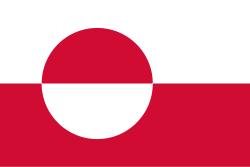Greenland's Melting Ice Reveals Rare Earth Riches Amid Geopolitical Tensions
 Greenland
GreenlandThe complex history between Greenland and Denmark continues to surface as the islands’ residents confront past injustices stemming from colonial practices. In the 1950s, a group of Inuit children was forcibly taken from their families and sent to Denmark to learn the Danish language, only to return unable to communicate with their parents. Prime Minister Mette Frederiksen publicly apologized in September 2022, acknowledging the inhumanity of these actions.
Additionally, from the 1960s to 1970s, many Inuit women were sterilized without consent, a practice aimed at curbing population growth according to Danish officials of the time. This issue, known as the Spiral Case, has spurred the formation of a joint commission to investigate these historical grievances.
Despite a desire for greater independence among Greenlanders, financial dependencies on Denmark complicate the issue. Denmark provides significant financial support to the island, with approximately €600 million annually to sustain their social system, including healthcare. Greenland's Prime Minister, Múte Egede, has indicated there is no timeline for independence, as the island grapples with its socio-economic challenges.
The recent declarations by former U.S. President Donald Trump regarding the strategic importance of Greenland have heightened tensions, as many residents perceive these comments as a mix of threat and opportunity amid their struggle for self-determination. The future trajectory of Greenland remains uncertain as both political and economic factors continue to influence the relationship with Denmark and the global community.
 Greenland
Greenland Greenland
Greenland Greenland
Greenland